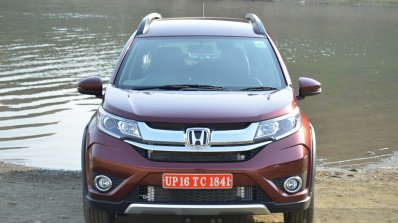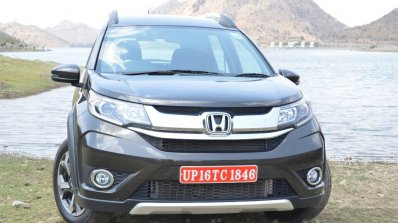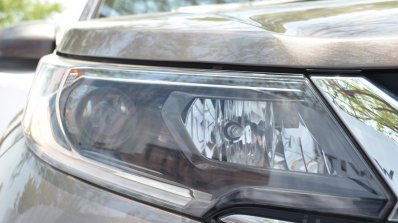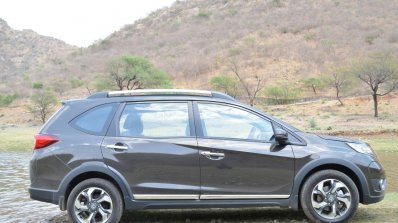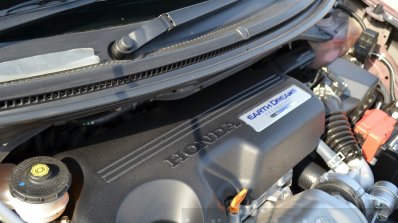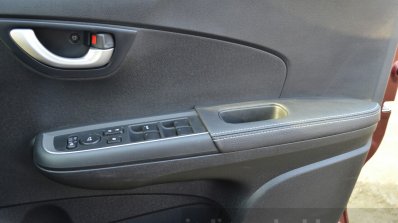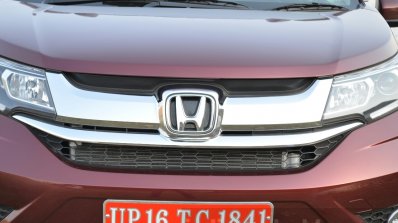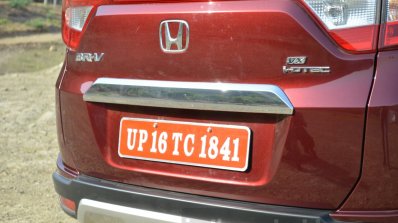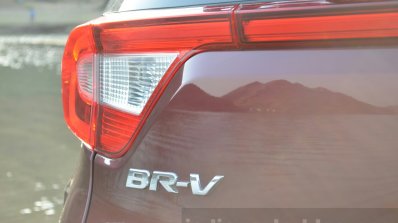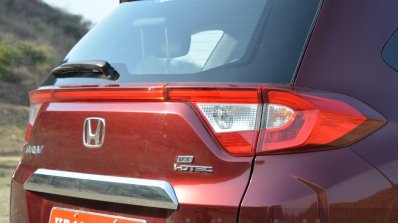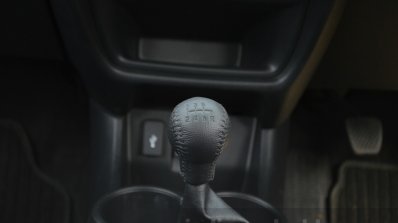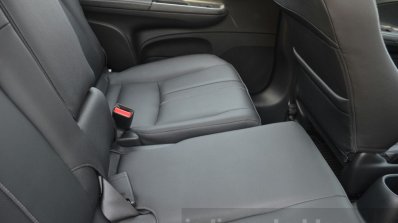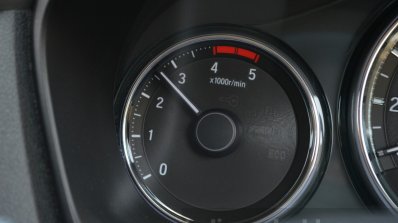Honda BR-V 2017 Review
The Honda BR-V has been launched in India as an alternative to the Hyundai Creta, Renault Duster and Mahindra Scorpio. Honda has been absent in the SUV space, aside from the premium CR-V, and especially the compact SUV segment has seen rivals like Hyundai sell over 64,000 units of the Creta from August 2015-March 2016 alone.
Despite having the Honda HR-V/Honda Vezel, the carmaker thinks the BR-V with its three-row seating capability will appeal to the Indian audience. Here's how it fares -
Exterior:

Honda says the grand design concept of the Honda BR-V 2017 was termed ‘Advanced Scene Hunter - Wherever I Want’. The company’s lead engineer explained that designers set out to sketch an ‘urban utility vehicle’ with ‘tough appearance’ and convenience of three-row seating.
While the BR-V comes across as a stylish product, it doesn’t appear butch or rugged as its competitors. Still, it gets the usual 'outdoor treatment' of roof rails, diamond-cut alloy wheels, silver skid plates and side body cladding.
Let’s not beat around the bush however: The Honda BR-V could be mistaken for a Honda Mobilio which seems to have hit the gym to bulk up a bit. Then again, the crossover/compact SUV segment in India is a bit of a scam. Most of the products in this segment are glorified hatchbacks, but they get away in the consumer’s minds owing to their styling, and the way they’re presented. At the end of the day, the manufacturers aren’t selling you a car, they’re selling you a lifestyle, and Honda, like other manufacturers in this segment, has got that communication right.

At the tape, the BR-V measures 4,456 mm in length, 1,735 mm in width, 1,666 mm in height and 2,662 mm in wheelbase. It is 10 mm longer than the Mobilio in terms of wheelbase, whereas in terms of kerb weight, the BR-V is between 57-75 kg heavier than the MPV depending on the variant. The ground clearance is a sizable 210 mm.
Its also evident that designers have used minor inferences from the larger Honda CR-V in places - the rear quarter glass panel and the headlights are clear examples. Aiding the design is the nameplate itself: Even non-car enthusiasts were curious to ask this reviewer if the BR-V was a smaller/larger version of the CR-V, so there again, communication's done right by Honda.

To summarize, the BR-V may not look as rugged as its competitors, but it looks stylish nevertheless.
Note: Projector headlights are standard on all grades of the BR-V. On top-end variants, Honda offers silver skid plates at the front and rear.
Interior:
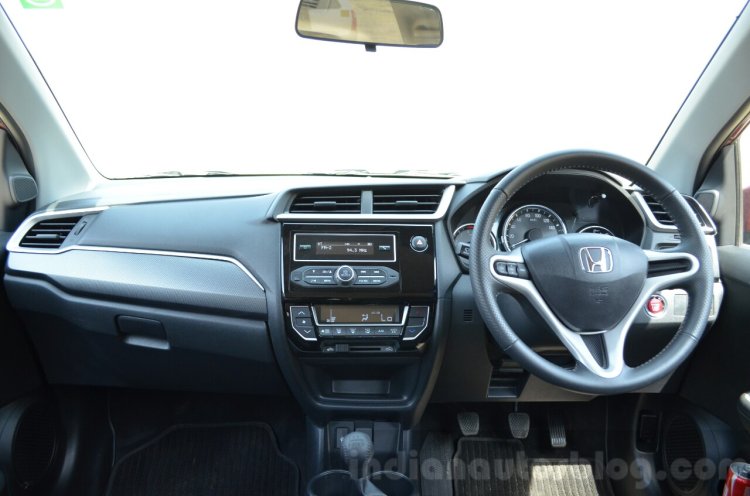
Stepping inside the BR-V, one will be instantly reminded of the Honda Amaze facelift which was introduced in early-March. Like the compact sedan, the center console of the Honda BR-V has rectangular AC vents, a 2-DIN Bluetooth-enabled music system below which rests controls for the automatic climate control system.
However, the BR-V for the Indian market gets the more upmarket steering wheel from the Honda City (the BR-V in ASEAN markets asks buyers to steer with the Honda Brio’s 3-spoke wheel in base and mid-variants). The dashboard is finished in all-black as are the seats. On the top-end VX variant, the Honda BR-V offers what is called ‘Sport Leather Upholstery’. What this is, is the Artificial Leather fabric in a shade of black with white contrast stitching. Taking a page from the Hyundai Creta, the door pads of the BR-V are lined with this material with white contrast stitching too.

Coming to cabin space, the BR-V is similar to the Honda Mobilio: Simply put, if you’ve sat inside a Mobilio, you’ve experienced comfort levels on the BR-V. What this says is that the BR-V offers more than average amounts of legroom and headroom for the first two rows of seats. Moving to the third row, while ingress and egress is not a difficult task thanks also to the one-touch tumble down of the second row seats, these seats can accommodate adults for short to medium distances only. While the last bench is wide enough for two adults, passengers will find knee-room lacking here. However, the second row of seats do slide fore-and-aft to liberate a few crucial inches of legroom for third-row passengers.
So, the BR-V comes across as comfortable if you were to go by numbers. However, the seats themselves aren’t too comfortable for long distances, as its evident they’re built to a cost. While it is acceptable to have this comfort quality on something like an Amaze, which is priced from INR 5.35 lakhs, on a INR 13 lakh BR-V, Honda has stretched it too far. The ergonomics play an important part too: At the risk of comparing apples to oranges, the Honda City’s ergonomics - especially surrounding the driver - feels miles ahead of the BR-V 2017. Shouldn’t it be the other way around?

An area where Honda’s Man-Maximum, Machine-Minimum concept has worked very well? The boot space. Even with all seats in place, the BR-V can lug 223 liters of bags, and with the third row folded, the BR-V features 691 liters of cargo space.
Features:

The BR-V is by no means a feature-rich offering. Yes, it does offer the essentials such as keyless entry with push-button start, automatic climate control, rear AC vents and so on, but even features like a reverse camera, rear parking sensors (both of which we feel are a must have on a car of this length), a touchscreen audio system, automatic day/night internal rear view mirror, cruise control, an armrest for the driver (an essential feature once again) are not available on this crossover. At nearly INR 13 lakhs ex-Showroom for the top-end diesel, and with rivals like the Hyundai Creta, the feature department is one area where the BR-V doesn’t do well, and mind you, we’re sugar-coating that statement.
Engine and Gearbox:

The Honda BR-V diesel is powered by the 1.5-liter four-cylinder i-DTEC diesel engine found in other Honda Cars India’s products. It develops 100 PS at 3,600 rpm and 200 Nm of torque at 1,750 rpm on the BR-V and uses a 6-speed manual gearbox.
Honda claims that it has upped NVH levels on the BR-V diesel, as the i-DTEC unit has drawn flak for being noisy on other products. Sadly though, this reviewer found no difference in the noise levels of the BR-V compared to a Moblilio: the crossover feels just as noisy as the MPV.

Putting the engine noise aside, Honda’s engineers also mention that gearing has been altered to better suit the BR-V’s weight. Compared to the Honda City (which has lent its 6MT gearbox to the BR-V), the final ratio has been lowered by 7.7 percent. The result?
The Honda BR-V 2017 diesel feels just as sprightly to drive as say a Honda City, despite the BR-V now being the heaviest car to make use of this 1.5-liter i-DTEC engine. The linear power delivery from this engine, combined with the well-chosen gear ratios, put the BR-V in a sweet-spot throughout its accessible rev-range. Performance is best in the mid-range (1,750-3,500 rpm), and slotting the SUV in 6th with speeds of around 100 km/h subdues engine noise to a great extent.

The Honda BR-V petrol uses the City’s 1.5-liter i-VTEC engine to develop 119 PS and 145 Nm of torque. Honda has developed a new 6-speed manual transmission for the BR-V, though in all honesty, the 6th cog feels unnecessary.
In 6th gear, at speeds between 80-110 km/h, the engine spins anywhere between 250-750 rpm lower than what it does in 5th. Unless you plan on using the BR-V heavily on highways at speeds above 110 km/h, we don’t see the utility of the 6th gear. And if your usage is heavily skewed towards the highway, wouldn’t a diesel BR-V suit you better?
That criticism aside, the petrol BR-V is a very good performer. Again, it feels a lot like driving a City with an extra 100 kg on-board. As with the i-VTEC engine, the lower part of the power band has a weak spot and this ensures you’re in a gear lower in city driving conditions, especially if you’re filled with occupants.

More than the petrol MT though, the package that got our instant vote was the petrol CVT. The gearbox is borrowed from the City, so it features a CVT with 7-stepped ratios and paddle shifters.
Though the CVT has the characteristic rubber-band effect, it appears less pronounced for a car of this size weighing over 1.3 tonnes. It takes little effort to get the BR-V CVT from walking speeds to 80 km/h which goes to say that low- and mid-range response is excellent. Even beyond these speeds, the paddle shifters can be used to keep this engine on the boil.
Ride and Handling:

This reviewer expected the Honda BR-V to have a softer ride than the Mobilio, owing to its increased ground clearance and stature of an SUV. However, the BR-V, like other Honda products, feels setup on the stiffer side. Add to that engineers have increased rigidity levels on the BR-V to reduce body roll, something which became apparent on twisting roads surrounding Udaipur.
The BR-V feels very car-like to drive. At no point do you feel you’re navigating a three-row vehicle with MPV-ish proportions. Coming to ride quality, it doesn’t have the softness of say a Renault Duster or a Hyundai Creta, but the ride is not harsh by any standards. You do feel the presence of road undulations, but for the most part, the ride quality is above average.
Brakes and Safety:

As standard, Honda offers dual front airbags on all variants. On all variants save for the base E petrol, ABS is standard as well. While the versions tested were equipped with ABS, the BR-V could do with gripper tyres we felt. It currently rides on low rolling resistance Eco tyres for better fuel efficiency, but a tyre upgrade could see noticeable improvements on the braking front.
The BR-V has also been crash tested by the company at 64 km/h (offset barrier frontal crash). Also, ASEAN NCAP gave the Indonesian-made BR-V a score of 5/5 for Adult Occupant Protection (AOP).
Fuel Economy:
According to the ARAI-tests, the Honda BR-V petrol MT is good for 15.4 km/l, the petrol CVT does 16 km/l and the diesel returns 21.9 km/l. On our short test drives, we saw the diesel returning around 15 km/l, the petrol MT did 10.4 km/l while the CVT hovered around 9.5-10 km/l mark. The above numbers are based on the on-board fuel efficiency indicator.
Prices:
The BR-V petrol range costs from INR 8.75-11.84 lakhs, the petrol CVT comes in at INR 11.99 lakhs, and the diesel lineup costs from INR 9.9-12.9 lakhs. The competitors, you ask?
The Hyundai Creta petrol range is priced from INR 9.15-11.84 lakhs, the petrol AT at INR 12.86 lakhs, and the diesel variants from INR 9.99-14.5 lakhs. The 2WD variants of the Mahindra Scorpio set you back by INR 10.03-13.89 lakhs.
Note: All prices mentioned above are ex-Showroom, New Delhi.
Verdict:
This reviewer, after having driven the BR-V, was expecting the crossover to cost as much as INR 75,000 over the Mobilio. Yes, the BR-V is certainly superior compared to the Mobilio with respect to features and performance, but where the Mobilio costs from INR 7.1 lakhs, the BR-V commands a whopping INR 1.65 lakhs premium, and its hard to justify that price especially when the competition is factored in.

While the prices of the BR-V may undercut rivals, the overall package is also a step down from a Creta or a Scorpio. Though the BR-V is mechanically solid, it doesn’t bring any excitement to this segment despite offering the third row of seats.
The main disappointment on the BR-V is the presentation: there’s no feel good factor involved, which Hyundai has built upon immensely with its products. The Scorpio on the other hand has its own charm with its ladder-frame layout and old-school SUV tricks.
There is nothing wrong or flawed with the BR-V 2017, don’t get us wrong, its just that the rivals have set the bar very high. So, at the end of the day, the BR-V may appear a good alternative to a sub-4m 7-seater like the Mahindra TUV300 or NuvoSport, but for buyers wanting to shell upwards of INR 12 lakhs, our recommendation will still be towards the Hyundai Creta.
Positives:
- Good performance, petrol CVT especially
- Dynamically sorted
Negatives:
- Feels built to a cost
- On the pricier side for what it offers


